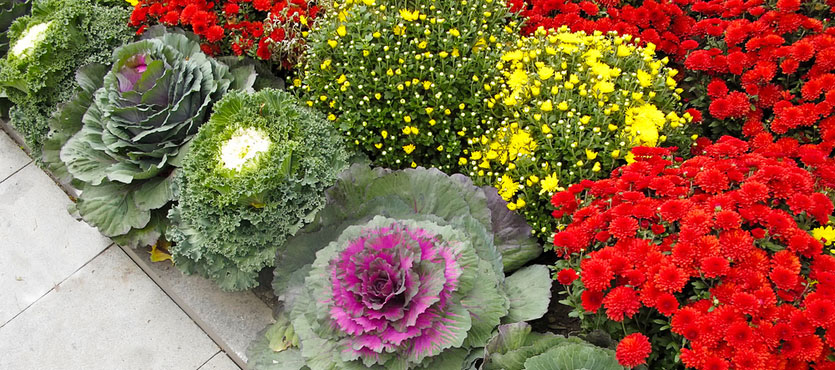You may have never considered it before but adding vegetables into your landscape design is a great idea. Not only do you get the benefit of fresh vegetables all season long, you get the beauty of the plants on which your harvest grows. Imagine the crisp bright green hues of fresh lettuce and the deep greens of tomato vines complementing the bold red tomatoes amid your golden marigolds and deep orange day lilies. Incorporating vegetables into your landscape design doesn’t mean those straight rows of vegetables like your grandparents had. It means you can create a beautiful landscape that includes herbs, fruits, and vegetables complementing your ornamental plants.
Integrating fruits, vegetables, and other edibles into your beds can give you an attractive and beautiful space wherever you choose to add it to your landscaping. You might be thinking, how can they grow together, after all, ornamentals and edibles require different care. Even so, with a little bit of learning, you can design and care for a delightful landscape that is aesthetically pleasing and productive. Doesn’t that make the most sense – a garden that is both beautiful and beneficial?
Tips to Get You Growing Successfully
- When choosing what to plant in your existing beds and where, consider the amount of sun each edible needs to deliver the best yield. Most foods require full sun, 8 to 10 hours a day for the greatest production. If you have beds with partial shade, consider planting fast growing crops such as lettuces and spinach there.
- As you create your design, plan for seasonal replacement plants to add once the spring vegetables have been harvested. You can rotate in more vegetables or flowers throughout the growing season, the choice is yours.
- The integration of vegetables into your landscape can be simple. Add vegetables that grow tall beside taller shrubs or plants near the back of your beds, while you plant smaller plants near the front. For starters, cucumbers, tomatoes, peppers, squash, rosemary, and thyme are easy to grow among your existing landscape.
- You should begin with a few vegetables and as your garden grows and learn the best ways to incorporate them into your landscape. As you learn, you can add in more edibles in a way that is low maintenance, effective, and attractive. Consider this, kale can be grown as a border with squash behind, near the house, and herbs in decorative planters in the chosen bed.
- If your plan includes fruit trees, consider the location carefully so that the annual maintenance works well and doesn’t create issues outside of the growing season (like fruit falling on walkways, driveways, and decks). If space is limited and you still want to add fruit, consider the ancient art of espalier. Fruit trees which are espaliered are pruned, tied, and trained to grow against a wall, fence, trellis, or stakes. If you want a variety of fruit, but have only space for a tree or two, consider “fruit salad trees” which are multiple fruit trees grafted onto a single plant. When you grow fruit trees, keep in mind that pruning is required in the dormant season and increases the density of fruit buds to create higher yields.
- Fruits can also be trained to grow overhead on pergolas or arbors for beauty, shade, and an abundance of crops. With a little bit of maintenance, grapes and kiwis do well. Lime, lemon, and fig trees can also be trained to grow overhead, though the final results won’t be a quick as with vines.
- When pesticides are needed, be sure to choose those specifically for food crops, otherwise the pesticide from your ornamentals can contaminate your edibles.
If you need help with design and integration of vegetables and fruits into your current landscape design or would simply like to start fresh with a complete landscaping makeover, call on the professionals at Xtreme Landscaping to help you created a bountiful and beautiful landscape design.

